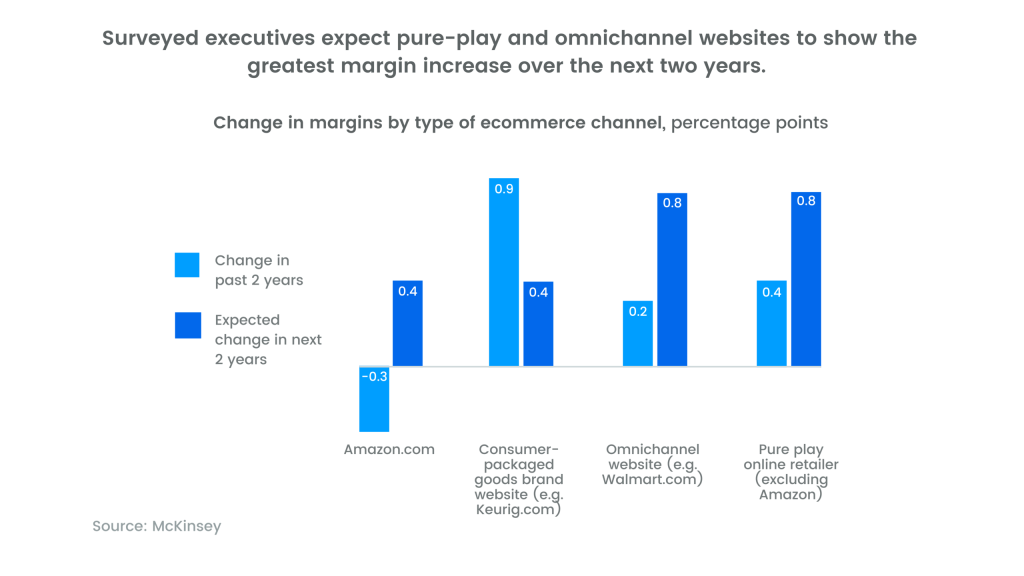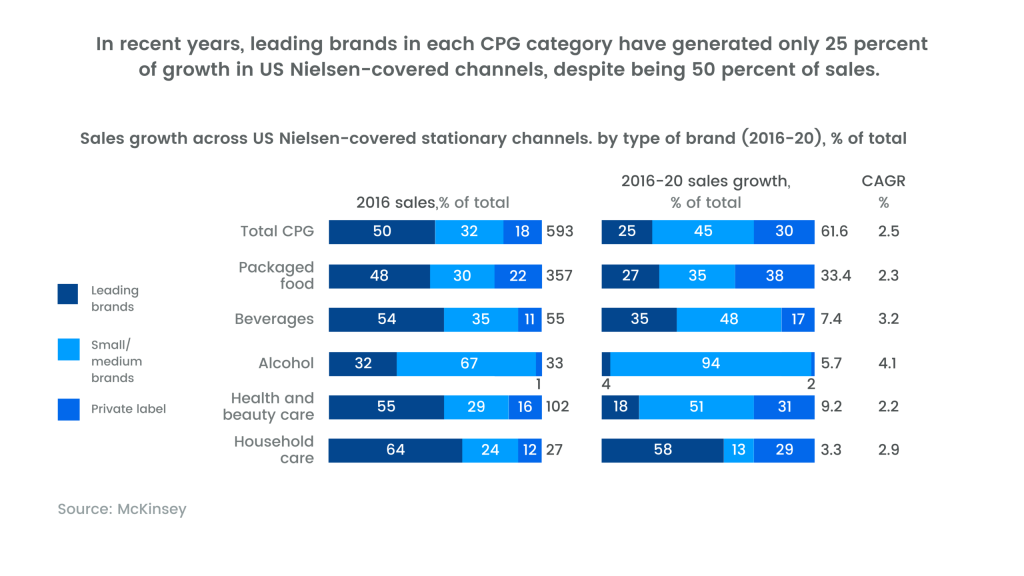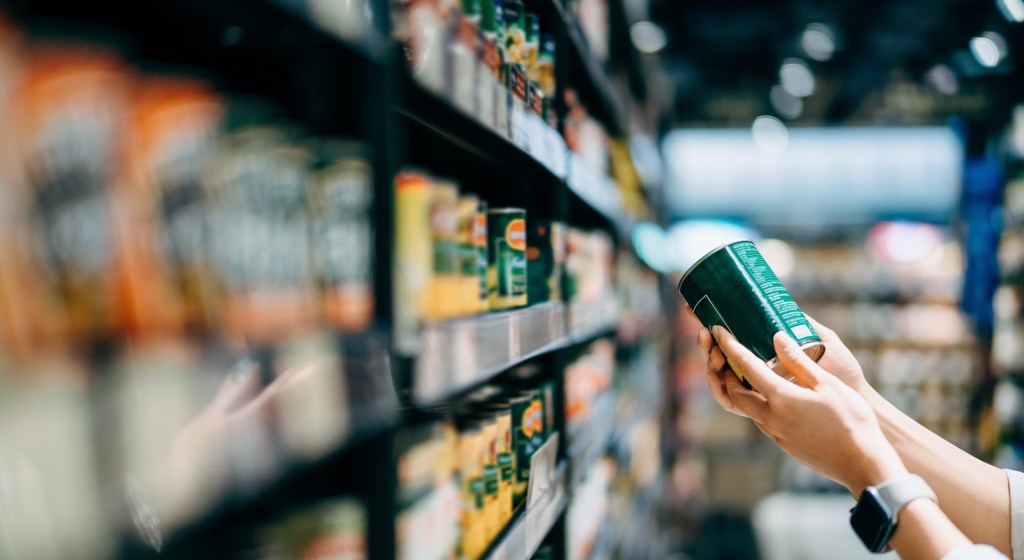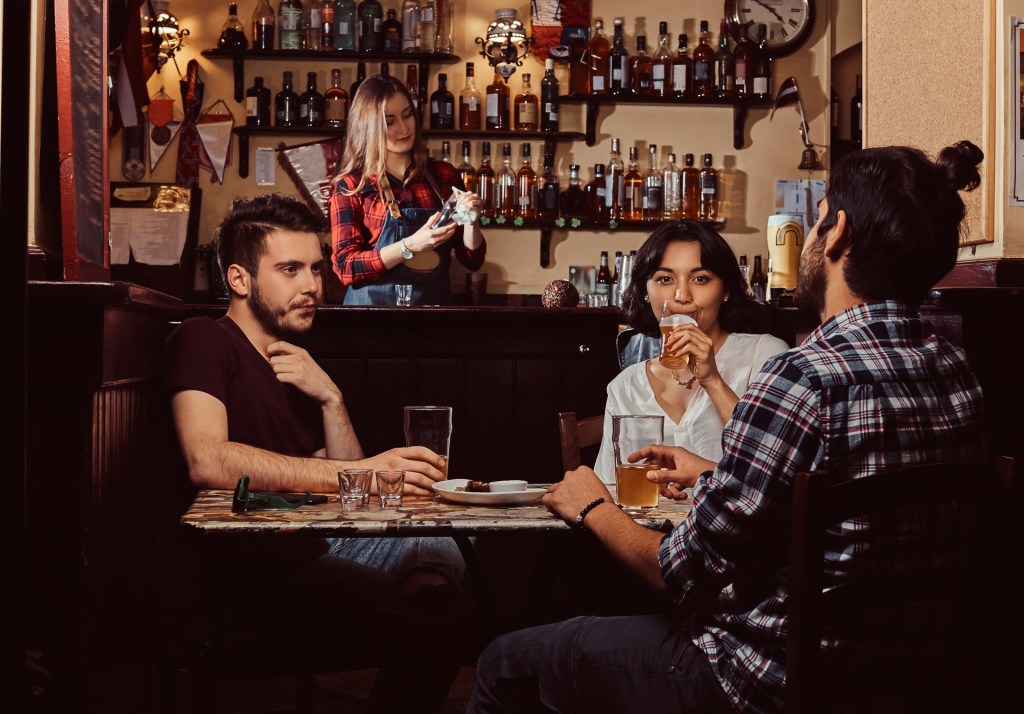What is eretail media?
Eretail media is online advertising on retailer websites. The most common and traditional form it takes is banners, which are known as static because they are simple display ads. They are found on retailer’s home pages, product pages and category pages.
Rich media is another type of media, and it transforms or is interactive in some way. Carousel ads are yet another option that feature rotating images or videos, which can be particularly good for bundling multiple products together.
Another type of media is programmatic ads, which offer a scheduled, automated purchase of ad space.
Eretail media is undergoing major change
There is a lot of talk about retail media in the CPG industry right now, and for good reason. The industry is undergoing a ‘seismic shift’ as BCG says. There is growing movement into ecommerce, as the following graph demonstrates, and this inexorable rise follows an established path to digitization other industries have already taken.

The trend was accelerated by the pandemic and is one reason why eretail media is growing–it simply accompanies ecommerce expansion. However, there are two additional reasons for the uptake in online media.
The first is that with the explosion of grocery ecommerce during lockdown, out of stock rates were elevated over the last year, creating a lot of churn for the most sought-after products. This means shoppers were often forced into trying new products. This has provided an ideal opportunity for smaller brands to gain a foothold, and eretail media has been the best way to do so. It’s significant because new product trial can be positive and if so, the challenger brand often slides into a shopper’s favourites in an app or simply becomes a repeat purchase. This can have long-term consequences.
This graph outlines the portion of the market small and medium brands currently claim. Their market share is growing.

The other, most significant factor leading to explosive growth in eretail media lies in data collection and personalization, also known as micro-targeting. The opportunity here is game-changing and BCG calls this shift as significant as the shift from traditional to digital media.
“A once-in-a-generation sea change, not unlike the move from traditional to digital media over a decade ago.”
BCG
This change is about the end of 3rd party cookies. Firefox and Safari stopped using them years ago and Google announced plans to end them in 2020. They have pushed the date back twice and currently the end of cookies has been delayed to 2023. The implications for the end of 3rd party cookies are far-reaching and will indeed transform online advertising.
Personalization is the future
The consequences for CPG retailers of the end of third party cookies–cookies generated not by the sites a user visits, but a separate, advertising server party–are significant because the data that they collect on their sites will become particularly valuable. Their privileged position as 1st party data collectors will allow them to function like media companies, giving them a potent platform to sell ad space and giving them possession of increasingly precise shopper data.
The major eretail media KPIs
One of the benefits of online advertising is the ability to precisely track the location and duration of banners right across a category which renders insight into competitor activity while demonstrating the effectiveness of a given campaign or promotion. The main KPIs are share of voice, type, location and duration of activation. Search ranking isn’t retail media strictly speaking but it plays a central role in sales and is connected to all the other KPIs and is implicated in media.
Build strategy around key tools and retailers
Using retail media effectively requires localized executional plans and monitoring in place to track their effectiveness. Different strategies need to be developed for different regions, categories and retailers. The more detailed and precise a plan is, the better its returns will be. The foundations of ecommerce and a well thought out digital shelf need to be in place to get the most out of a media spend. For instance, if a product isn’t well monitored for availability and is out of stock during a banner campaign, the media buy can only yield zero results.




